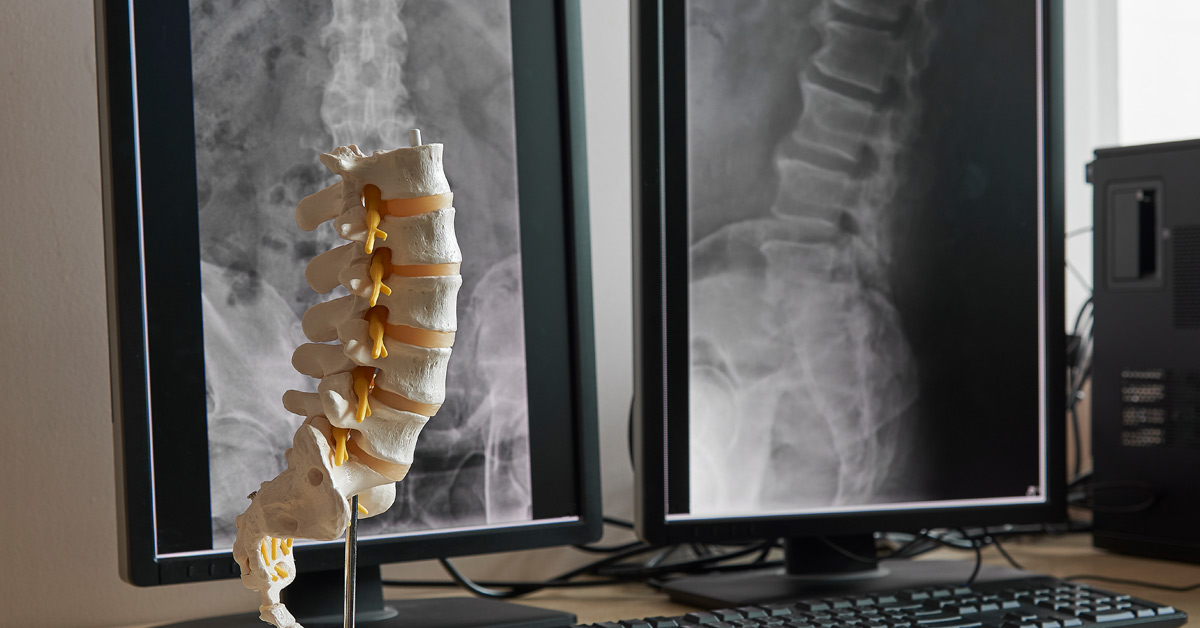Artificial Lumbar Disc

Your lower back does a lot of heavy lifting. It supports most of your body’s weight and allows you to bend, twist, and move with ease. But when one of the cushioning discs between the vertebrae wears out, the result can be chronic pain that doesn’t go away.
Artificial lumbar disc replacement is an advanced surgical option designed to address the pain. The damaged disc is replaced to restore normal motion. This helps you move freely again so you can regain a pain-free life.
About Spinal Discs
Spinal discs are found between each vertebra in your spine. They have an exterior made of fibrous cartilage and collagen fibers, and a gel-like inner core. This combination provides both flexibility and strength. The discs protect the spinal cord while absorbing pressure from movement and activities.
Over time, discs can lose water, crack, or bulge, which may cause pain and pressure on nearby nerves.
What Is an Artificial Lumbar Disc?
An artificial lumbar disc is a medical implant designed to replace a damaged disc. It can be made of metal, such as titanium or cobalt-chromium, durable medical-grade plastic, or a combination of both. These materials are chosen for their strength and safety within the body.
Artificial discs are designed to mimic both the structure and motion of a healthy disc. They are able to:
- Restore the normal spacing between vertebrae
- Relieve pressure on nerves
- Allow for bending, twisting, and turning
Lumbar fusion, which locks two bones together, is another type of surgery for damaged lumbar discs. In contrast to spinal fusion surgery, an artificial disc preserves movement.
The function of the lumbar discs is especially important because they carry a significant portion of your body’s weight. When healthy, they maintain the spine’s stability. When damaged, they can lead to:
- Pain
- Stiffness
- Nerve irritation that interferes with daily activities
What Is Lumbar Disc Replacement Surgery?
Lumbar disc replacement is a type of spine surgery where a worn or damaged disc in the lower back is removed and replaced with an artificial disc. The goal of this procedure is to relieve chronic low back pain.
By preserving movement at the treated level, the risk of added stress and wear on nearby discs is lessened.
When Is Disc Replacement Recommended?
Doctors usually recommend lumbar disc replacement surgery if pain is associated with one or two damaged discs and nonsurgical treatments have not provided relief. The surgery may be recommended for conditions like lumbar spondylosis, herniated disc, and degenerative disc disease. In general, you may be a good candidate if:
- You are in good health overall
- Pain is coming mainly from the disc, not the joints or spinal cord
- There is no severe arthritis or osteoporosis
- No prior major spinal surgery has been performed at that level
- You are not significantly overweight
How Is Disc Replacement Performed?
Lumbar disc replacement is performed under general anesthesia and usually takes two to three hours. The surgeon reaches the spine through a small incision in the abdomen, gently moving aside muscles and tissues to expose the damaged disc.
The worn disc and any fragments or bone spurs are removed.
An artificial disc, sized specifically to the spine, is inserted into the empty disc space. Imaging is used during surgery to confirm the implant is in the correct position before closing the incision.
A short hospitalization is usually required. The length of stay depends on how quickly pain is controlled and mobility returns. Walking is encouraged soon after surgery to improve circulation and prevent blood clots.
While each person is different, generalized recovery milestones include:
- Light walking and gentle movement within days of surgery
- Return to light work or household tasks in two to four weeks
- Gradual return to heavier activity and exercise in six to twelve weeks
Lumbar disc replacement is generally safe; however, all surgeries carry some risks. Complications can include:
- Infection
- Bleeding
- Nerve injury
- Problems related to anesthesia
- Continued back pain or nerve irritation
See a Spine Surgeon in Atlanta to Learn More
Artificial lumbar discs can be a game-changer for someone suffering from chronic lower back pain. The first step is to see an expert back doctor for a thorough evaluation to discover if this back surgery is right for you.
Don’t continue to live with lower back pain – schedule an appointment with a board-certified spine surgeon in Atlanta today!

